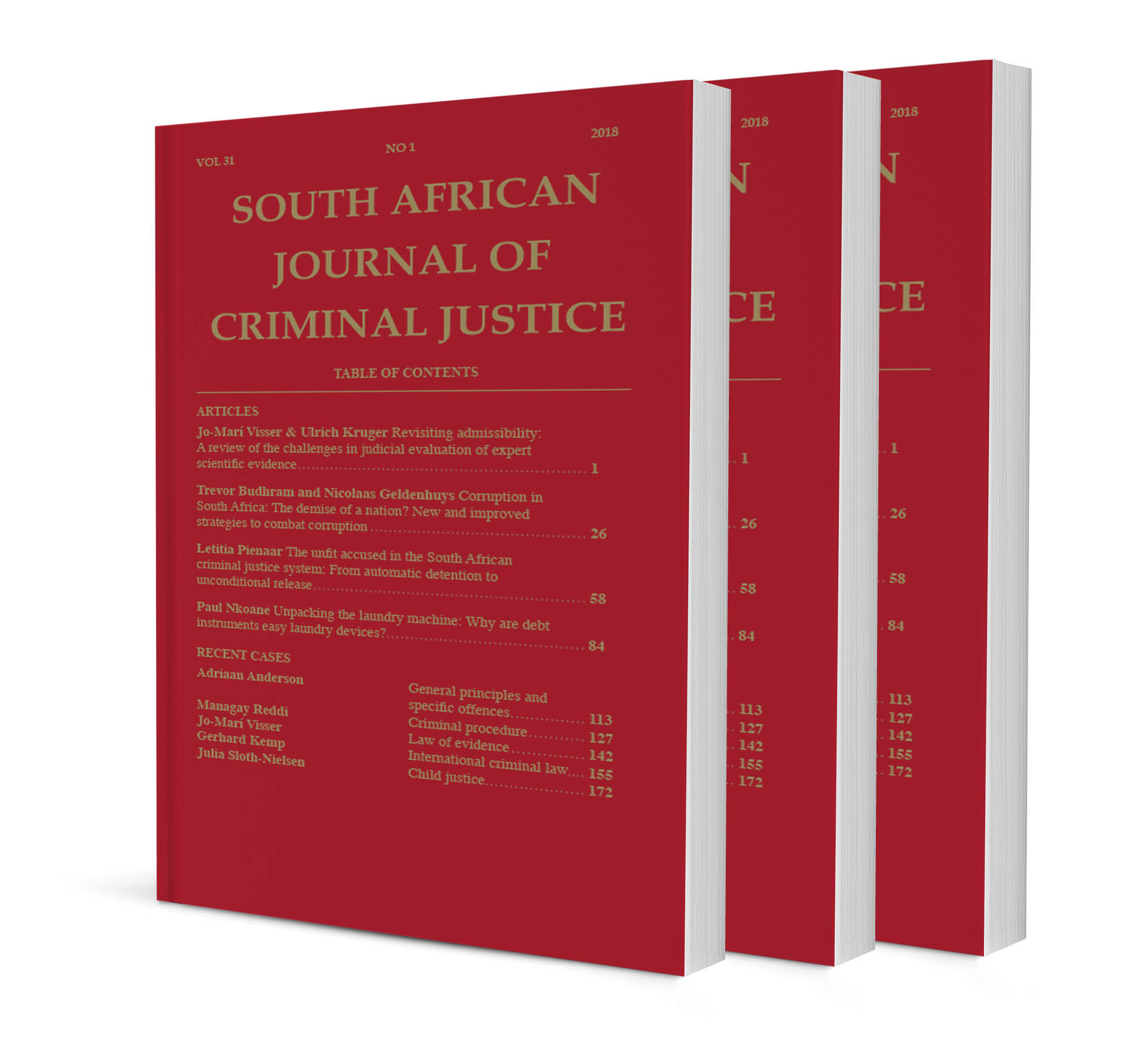
Defining the contours of a ‘criminal gang’ and a ‘pattern of criminal gang activity’ under the Prevention of Organised Crime Act
Author: Delano van der Linde
ISSN: 1996-2118
Affiliations: LLB LLM LLD (Stell), Senior Lecturer, Department of Public Law, Stellenbosch University
Source: South African Journal of Criminal Justice, Volume 34 Issue 2, p. 231 – 258
https://doi.org/10.47348/SACJ/v34/i2a4
Abstract
Before an accused can be convicted under Chapter 4 of the Prevention of Organised Crime Act 121 of 1998 (POCA), two preliminary elements must be proven. These preliminary elements can be found under Chapter 1, and require the accused to be a gang member or active participant in a criminal gang and that a pattern of criminal gang activity should exist. Even though POCA was promulgated over 20 years ago, much uncertainty still exists as to the interpretation of various elements of the preliminary requirements under Chapter 1. This article examines the requirements set out in Chapter 1 of POCA, with a specific focus on how courts have interpreted these requirements. To do so, reference is made, amongst others, to the California Street Terrorism Enforcement and Prevention Act of 1988 (STEP) (as POCA was modelled after this legislation) and Chapter 2 of POCA (which deals with racketeering and is similarly structured to Chapter 4). This article will ultimately illustrate that courts have largely ignored these definitions which gave rise to legal uncertainty. Various suggestions will be made regarding the amendment or desired interpretation of these definitions.